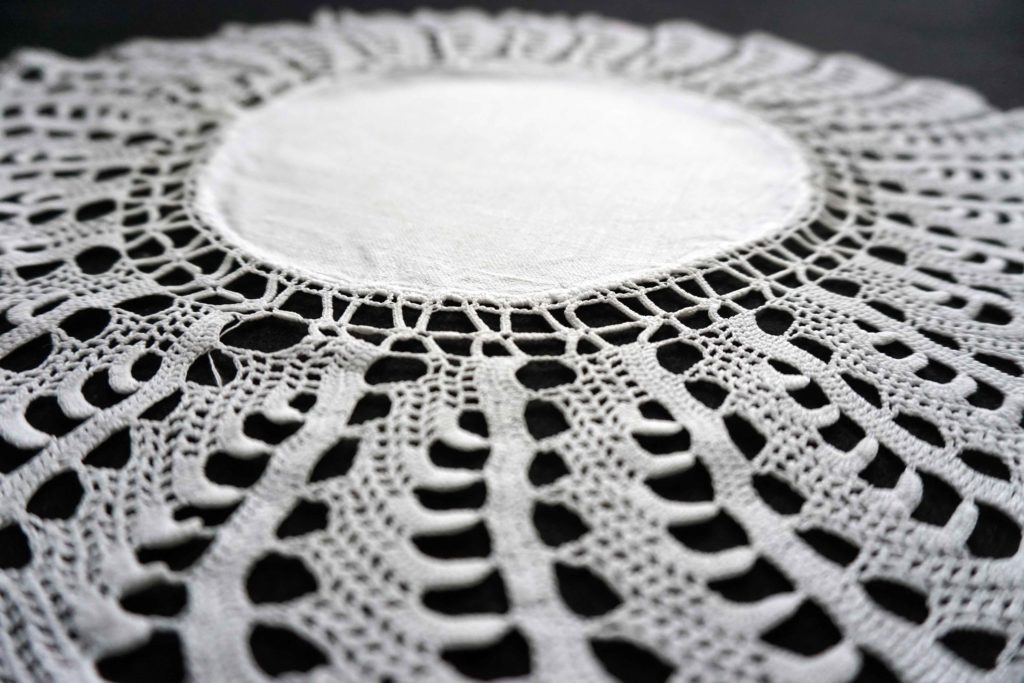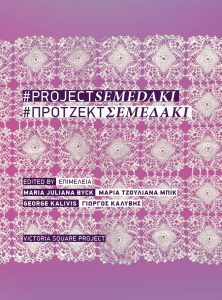Lookbook
#projectsemedaki
Launch June 2022
Maria Juliana Byck and George Kalivis created this book to document the zero waste, community fashion initiative #ProjectSemedaki; a creative reuse project that took place in collaboration with Victoria Square Project.
The ubiquitous but devalued Greek traditional handmade domestic textiles—the semedakia—are highlighted as a symbol of the work, creativity, technical skill, and innovation shared between generations of women over thousands of years. #ProjectSemedaki culminated in a public space intervention that presented simple alternatives to the toxic practices, wastefulness, and over consumption of the global textile industry. The photos in this publication capture the unique clothing designs created in collaboration with models from 26 countries, reflecting the diverse social composition of the Victoria Square Project neighborhood where the project took place in 2019. Six authors contributed texts that address a broad range of topics from fashion and social change, gender dynamics and fluctuating value in the history of textiles production, to the dualism assumed between fine art (haute couture) and crafts, the queering of cultural heritage textiles, and the emotional, social and environmental impact of fast fashion, mass consumption and our current disposable textile culture.
Read or download #projectsemedaki book here.
#projectsemedaki is about refashioning. Rethinking how we approach clothing and being together as a community. Therefore, the book is a reimagining of the fashion industry standard: the lookbook. For generations women in Greece produced semedakia, and other traditional handmade textiles, as a part of their dowry. The book explores the role of textiles in the lives of women, from ancient times to the present. Colorful spreads feature images of the semedakia and the house of refashion upcycled clothing designs.
The book investigates the embedded social, cultural and emotional implications of textiles. Holding a wealth of intergenerational wisdom, textiles contain a complex history of interconnected production, fluctuating value, and undulating desires, tracing stories of movement, displacement, dreams and exchange. Compositions of fabric and thread have traveled throughout the region, connecting cities, cultural practices, and people through rituals, beliefs and traditions, in an ongoing dialogue of techniques and materials. While more ephemeral, textiles materials disappear over time and thus are often erased from the dynamics of history. Although once considered more valuable than gold, the importance of woven fibers in cultural heritage is often overlooked. Moreover, the informal rituals of production, sharing and gathering in domestic and neighborhood settings, remains unclassified and forgotten.

Textiles are a means of understanding the politicization, commodification and globalization of our lives. Carried on our bodies and residing in our home, while intimate, personal and every day, textiles are simultaneously intrinsically public and communal. Infused with nostalgia and regional significance, they provide an apt metaphor for exploring the social fabric of our lives.
The publication includes texts on a range of topics such as waste and exploitation in the globalized clothing industry, emerging trends in creative DIY, sustainable, and ethical fashion, resilience and community as an intrinsic part of textile arts, resurgence of craft in women’s activism, fashion as it aligns with protest movements and social change, and the queering of handicraft. The texts are in both Greek and English. Contributing authors are Anna Bonarou, Efi Falida, Anna Fardi, George Kalivis, Maria Juliana Byck and Emmeline de Mooji of The Feminist Needlework Party.
Editor Maria Juliana Byck with George Kalivis
Art Direction Maria Juliana Byck
Graphic Design George Kalivis
Fashion show photos by John Sachpazis, Greek semedakia photos by Maria Juliana Byck.
Published by Victoria Square Project
Production by Contested Editing
